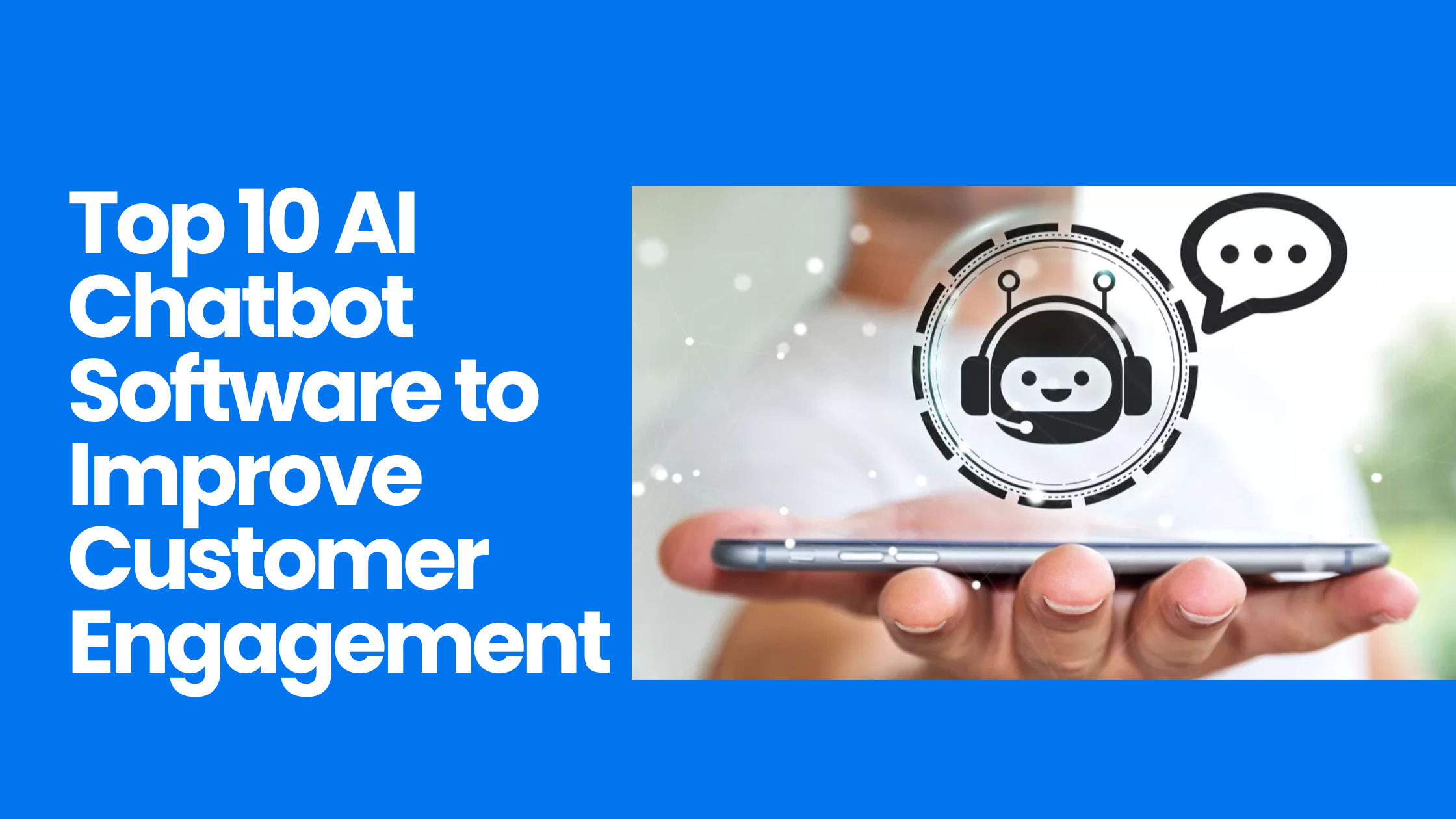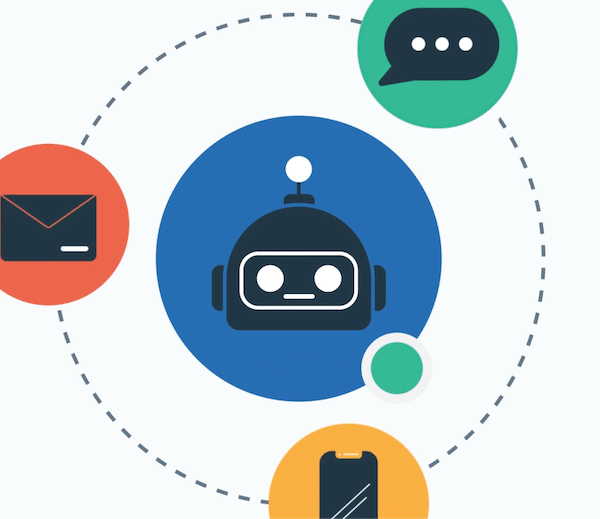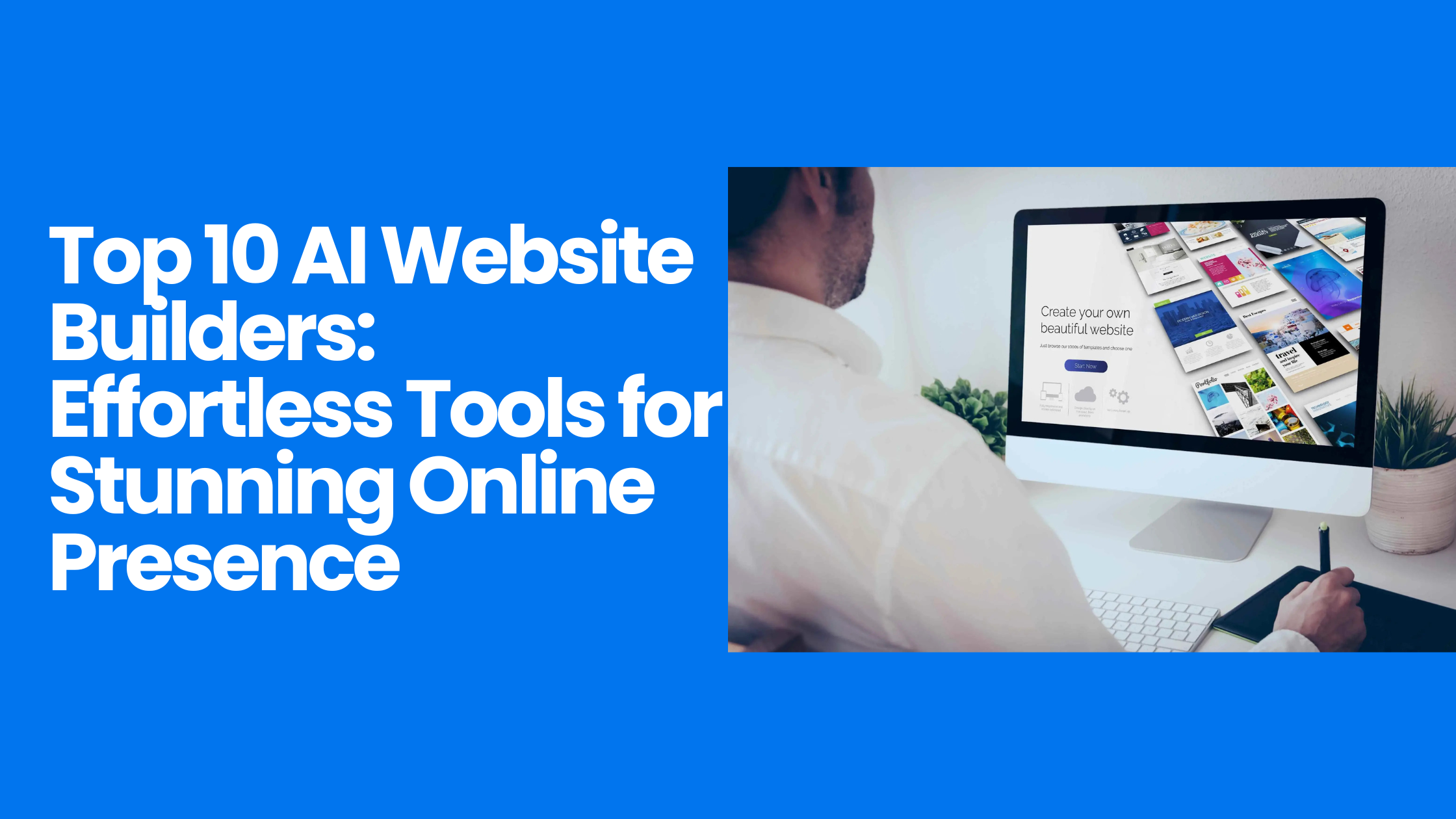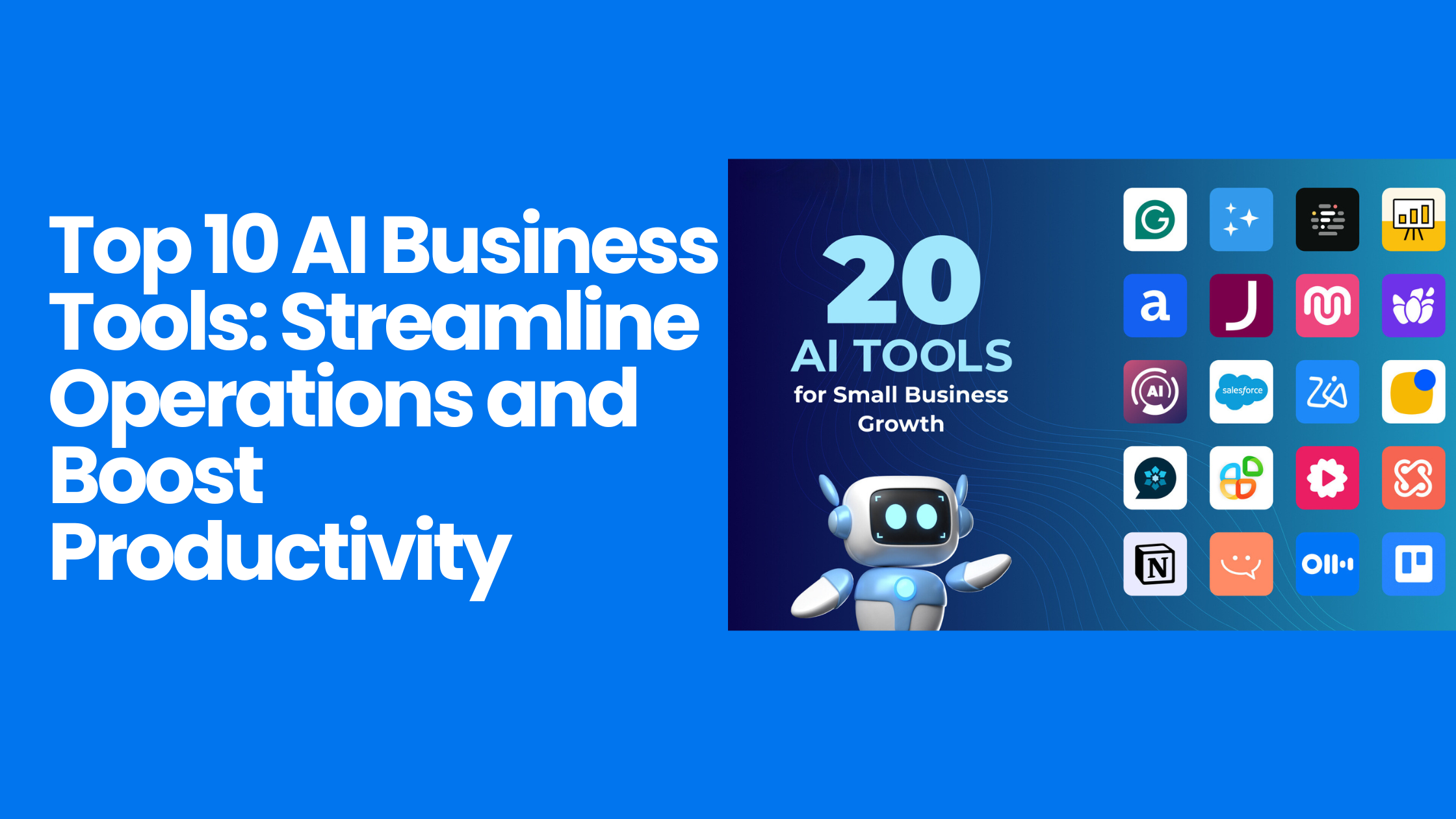
Top 10 AI Chatbot Software to Improve Customer Engagement
- AI Chatbot for Customer Service Productivity AI Tools 2024
- October 29, 2024
- No Comments
In recent years, artificial intelligence has taken remarkable strides forward, particularly in the realm of customer service. Among the most transformative components is the advent of AI chatbots. These intelligent virtual assistants are adept at enhancing user interactions, streamlining operations, and providing instantaneous service to customers around the clock. As businesses increasingly recognize their power, the exploration of the top 10 AI chatbot software solutions becomes essential for those looking to stay ahead in today’s digital landscape. This blog post delves into these advanced tools, exploring their capabilities, benefits, and the critical considerations that businesses must keep in mind when selecting the right solution.
Understanding AI Chatbot Capabilities and Benefits

As organizations look to improve customer experiences, understanding the core capabilities of AI chatbots becomes crucial.
What Are AI Chatbots?
AI chatbots are computer programs designed to simulate human conversation through voice or text interactions. Utilizing natural language processing (NLP) and machine learning, they can understand and respond to user inquiries, making them invaluable for companies seeking to enhance communication efficiency. Unlike traditional chatbots that rely on predefined responses, AI-powered chatbots learn from interactions, adapting their answers over time to provide more relevant support.
Benefits of Implementing AI Chatbots
The benefits of deploying AI chatbots within a business model are multifaceted. First and foremost, they significantly reduce response times by providing immediate answers to inquiries, thereby improving overall customer satisfaction.
Moreover, AI chatbots operate 24/7, offering uninterrupted support regardless of time zone differences. This is particularly advantageous for businesses with global clientele, as issues can be resolved without delays.
Additionally, the ability to handle multiple conversations simultaneously ensures that no customer is left waiting, which can be a game-changer during peak hours. Finally, the data analytics capabilities of AI chatbots allow businesses to gather valuable insights about customer preferences and behaviors, enabling tailored marketing strategies and enhanced decision-making processes.
The Impact on Customer Experience
The integration of AI chatbots profoundly impacts customer experience. When consumers receive prompt, accurate responses to their queries, it fosters trust and loyalty toward the brand.
Furthermore, by automating routine inquiries such as FAQs, order tracking, and appointment scheduling, human agents can focus on more complex tasks, leading to improved employee productivity.
This shift not only enhances the efficiency of customer service teams but also enriches the overall customer experience by ensuring that human resources are utilized where they matter most.
Choosing the Right AI Chatbot for Your Business Needs

With numerous options available, selecting the appropriate AI chatbot software can be daunting.
Assessing Your Business Requirements
Before diving into the myriad of choices, it is essential to assess your specific business requirements.
Consider factors such as your industry type, target audience, and the volume of customer interactions. For example, an e-commerce platform may require a chatbot that excels in managing sales inquiries, while a healthcare provider might need one capable of scheduling appointments and answering patient queries.
Identifying unique pain points within your current customer service strategy can also guide you toward the functionalities needed in a chatbot. For instance, if you frequently encounter repetitive questions, look for chatbots with robust FAQ capabilities that can automate these responses effectively.
Evaluating Integration Capabilities
A successful AI chatbot deployment should seamlessly integrate with existing systems and workflows.
Consider how the chatbot will connect with your Customer Relationship Management (CRM) software, email platforms, and social media channels. An ideal chatbot will synchronize effortlessly with these tools, ensuring a cohesive customer experience across multiple touchpoints.
Additionally, assess whether the chatbot supports API access for further customization and connections to third-party applications. A flexible integration capability can greatly enhance the chatbot’s usefulness and ensure that it aligns perfectly with your operational ecosystem.
Budget Considerations
While the long-term benefits of AI chatbots are evident, it’s vital to consider the financial implications before making a selection.
Evaluate the pricing structure of various chatbot solutions to determine what fits within your budget. Some platforms operate on a subscription model, while others may charge based on usage or additional features.
Be wary of hidden costs that may arise from integrations, customizations, or ongoing maintenance. Weighing initial investment against potential returns and savings in operational efficiencies will allow you to make a well-informed decision.
Key Features to Look for in AI Chatbot Software

When evaluating potential AI chatbot software, certain key features stand out as essential for maximizing effectiveness.
Natural Language Processing (NLP) Capabilities
A hallmark feature of AI chatbots is their ability to understand human language through advanced NLP.
This technology enables chatbots to interpret user intent, decipher context, and generate meaningful responses. The more sophisticated the NLP capabilities, the better the chatbot can engage users in natural, conversational dialogue.
Look for chatbots that support multiple languages and dialects, allowing you to cater to a diverse clientele. The inclusion of sentiment analysis can further enhance the bot’s responsiveness by identifying user emotions and adjusting its tone accordingly.
Customization Options
Every business has distinct branding and messaging requirements, so it’s crucial to choose a chatbot solution that offers extensive customization options.
From visual appearance to conversational tone, personalizing the chatbot to reflect your brand identity strengthens customer engagement.
Furthermore, the ability to customize automated responses and workflows allows you to tailor interactions to fit specific scenarios, resulting in more meaningful conversations with users.
Reporting and Analytics Features
To refine customer interactions continually, chatbots must provide robust reporting and analytics capabilities.
These tools offer insights into user behavior, common inquiries, interaction volumes, and satisfaction ratings. By analyzing this data, businesses can identify trends, optimize chatbot performance, and uncover areas for improvement.
Gauging the effectiveness of different responses can lead to better-trained models and ultimately drive superior customer experiences.
Industry-Specific Applications of AI Chatbots
Different industries have unique challenges and customer needs, making industry-specific applications of AI chatbots particularly beneficial.
E-Commerce and Retail
In the e-commerce domain, AI chatbots serve as essential tools for driving sales and enhancing the shopping experience.
They can provide personalized product recommendations based on user preferences, assist in cart abandonment recovery, and answer questions regarding shipping and return policies.
By guiding users through the purchasing process and addressing concerns in real-time, chatbots contribute to higher conversion rates and improved customer satisfaction.
Healthcare
In healthcare settings, chatbots can streamline administrative tasks and improve patient engagement.
They can facilitate appointment scheduling, send reminders, and provide preliminary medical information, freeing up healthcare professionals to concentrate on more critical aspects of care.
Moreover, chatbots can help triage patients by gathering information about symptoms, thus directing them to the appropriate healthcare services efficiently.
Hospitality
The hospitality industry has embraced AI chatbots to enhance guest experiences and streamline operations.
Chatbots can assist with reservation inquiries, provide local recommendations, and answer frequently asked questions about hotel amenities.
During the stay, they can offer room service, manage check-ins and check-outs, and collect feedback, creating a seamless, enjoyable experience for guests.
Popular AI Chatbot Platforms and Their Strengths
As the demand for AI chatbots grows, many software platforms have emerged, each with unique strengths and capabilities.
Dialogflow
Developed by Google, Dialogflow is known for its powerful NLP capabilities and ease of use.
It integrates seamlessly with popular messaging platforms and provides extensive documentation for developers. Its machine learning algorithms allow for continuous improvements in response accuracy based on user interactions.
Microsoft Bot Framework
The Microsoft Bot Framework offers a comprehensive suite for building bots across multiple channels.
Its development environment allows for advanced customizations, and its integration with Azure provides a robust backend infrastructure. The framework also includes cognitive services, empowering bots with advanced AI capabilities such as speech recognition and image processing.
Tidio
Tidio is recognized for its user-friendly interface and quick setup process.
Designed explicitly for e-commerce, Tidio offers customizable templates and integrations with major online stores. Its built-in email automation complements live chat, creating a unified approach to customer engagement.
Integrating AI Chatbots with Existing Systems
Successful chatbot implementation involves seamless integration with current systems and applications.
Importance of Integration
Integrating AI chatbots with existing systems ensures that they function effectively and provide a consistent user experience across all channels.
For example, connecting a chatbot to your CRM system allows for personalized interactions based on customer history, while integrating with payment gateways facilitates smooth transactions through the chatbot interface.
Efficient integration eliminates silos between departments and enhances collaboration among teams, leading to improved service delivery.
Steps for Successful Integration
Begin by mapping out the workflows and touchpoints where the chatbot will interact with existing systems.
Identify the necessary APIs and endpoints required for seamless connectivity. Testing the integration in a controlled environment before launching it publicly is critical to uncover any potential issues.
Additionally, provide adequate training and resources for your team to ensure everyone understands how to utilize the chatbot effectively, both for troubleshooting purposes and optimizing interactions.
Monitoring Performance Post-Integration
After successfully integrating the AI chatbot, monitoring its performance becomes paramount.
Establish key performance indicators (KPIs) to evaluate the chatbot’s effectiveness in achieving business objectives. Regularly review user feedback and interaction logs to identify areas for improvement.
Utilizing analytical tools will enable you to make data-driven decisions and refine the chatbot’s capabilities to meet evolving customer expectations.
The Future of AI Chatbots and Emerging Trends
As technology continues to advance, the future of AI chatbots holds exciting possibilities that will shape customer interactions.
Increased Personalization through Machine Learning
Machine learning is set to play a pivotal role in enhancing chatbot personalization.
Future chatbots will analyze user behavior patterns and preferences in real-time to provide hyper-personalized experiences. By leveraging historical data, they will anticipate customer needs and offer proactive assistance, setting a new standard for customer service.
Voice Interaction and Multi-Modal Capabilities
With the rise of smart speakers and voice-activated devices, voice interaction is becoming increasingly prevalent.
The next generation of AI chatbots will likely incorporate advanced voice recognition capabilities, allowing users to engage via spoken language.
Multi-modal chatbots that combine text, voice, and visual elements will create richer interactions, accommodating varying user preferences and accessibility requirements.
Ethical Considerations in AI Chatbot Development
As AI chatbots proliferate, ethical considerations surrounding data privacy and security must remain at the forefront.
Businesses will need to implement stringent measures to protect user data and ensure compliance with regulations such as GDPR. Transparency in data collection practices and maintaining user trust will be essential for the sustainable growth of AI chatbot technology.
Implementing and Managing AI Chatbot Solutions
While implementing AI chatbots can seem overwhelming, following a structured approach will ease the transition.
Creating a Strategic Implementation Plan
Start by defining clear objectives for your chatbot initiative.
Whether you aim to reduce response times, increase lead generation, or enhance customer engagement, having a strategic plan will guide the implementation process.
Outline key milestones, assign responsibilities, and establish a timeline to keep the project on track.
Training and Fine-Tuning the Chatbot
Once the chatbot is deployed, ongoing training and fine-tuning are essential to optimize its performance.
Regularly update its knowledge base with new information and answer variations to enhance response accuracy.
Solicit feedback from users and customer service agents to identify areas where the chatbot may need adjustments or improvements.
Continuous Monitoring and Optimization
The launch of an AI chatbot is just the beginning; continuous monitoring and optimization are crucial to maximize its impact.
Establish a framework for regularly reviewing performance metrics and user feedback. Leverage insights gained from analytics to make informed decisions about updates and enhancements, ensuring that the chatbot evolves alongside customer expectations and technological advancements.
Overcoming Challenges and Best Practices for AI Chatbot Deployment
Despite the advantages of AI chatbots, businesses may encounter challenges during deployment.
Common Challenges Faced During Deployment
One prevalent challenge is ensuring the chatbot’s comprehension of diverse user inputs.
Users may frame their questions differently, using slang or colloquialisms, which could confuse the bot. Continuous refinement of the chatbot’s NLP capabilities is essential to address this issue.
Another challenge lies in managing user expectations. It’s important for businesses to communicate the chatbot’s limitations clearly—educating customers on what it can and cannot do will prevent frustration.
Best Practices for Successful AI Chatbot Deployment
To enhance the chances of success, consider implementing best practices throughout the deployment process.
First, involve key stakeholders from various departments to gather diverse perspectives and align the chatbot’s functionalities with organizational goals.
Second, conduct thorough testing before full-scale launch. This will help identify and rectify potential issues while also providing an opportunity to gather initial feedback.
Finally, encourage a culture of adaptability among team members. Emphasizing the importance of embracing change and innovation will foster a more supportive environment for chatbot deployment.
“Ready to learn more? Check out our companion article for deeper insights into Best Tools For Image Generation. Additionally, explore our latest blog post for fresh perspectives on [Topic]. Happy reading!”

Conclusion
The rise of AI chatbots is revolutionizing customer interactions across industries, providing opportunities for businesses to enhance service delivery and improve customer satisfaction.
By understanding the capabilities and benefits of AI chatbot software, assessing business needs, and selecting the right solution, organizations can harness the power of artificial intelligence to elevate their customer service strategies.
As technology continues to evolve, staying abreast of emerging trends and best practices will be essential for maximizing the impact of AI chatbots. Embracing this transformative technology not only positions businesses to thrive in the competitive landscape but also paves the way for richer, more engaging customer experiences in the future.
Looking to learn more? Dive into our related article for in-depth insights into the Best Tools For Image Generation. Plus, discover more in our latest blog post on AI Code Generators . Keep exploring with us!
Related Tools:
Image Generation Tools
Video Generators
Productivity Tools
Design Generation Tools
Music Generation Tools
For more AI tools, explore all categories by clicking here.





